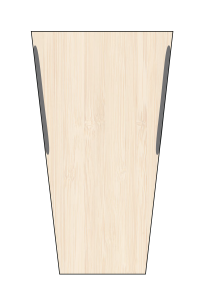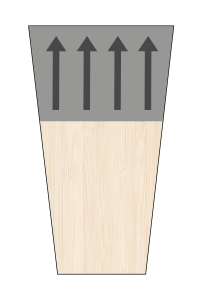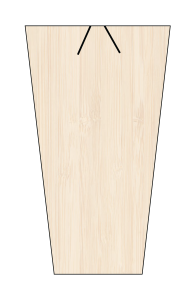“We make our reeds for intonation and response in the context of fundamentals and good practice habits.” -Ben Kamins
That being said…
- Tone is subjective. Resonance is debatably objective. Unify the resonance of your instrument by matching the less resonant notes to the same quality of resonance as the most resonant notes. Make your reeds, blow your air, and choose your fingerings accordingly.
- Substance of tone in the tenor register comes from the amount of cane in the back of the reed.
- Thin or weak tone in the tenor register could mean an uneven taper on the rails, particularly in the front third.

- To make a good reed slightly less resonant (darker), flatten the collar-to-tip taper in the front third of the reed a miniscule amount.

- To make a good reed slightly more resonant (brighter), keep the structure of the tip bevel, but work here a tiny amount:

The material in this learning module comes from The Banana of Life: Peeling Away the Mysteries of Reed Making for the Bassoon by Rian Craypo and has been edited for clarity by Jessi Vandagriff. Please do not share or distribute this information to those not using the decision-based learning model. Used with permission.